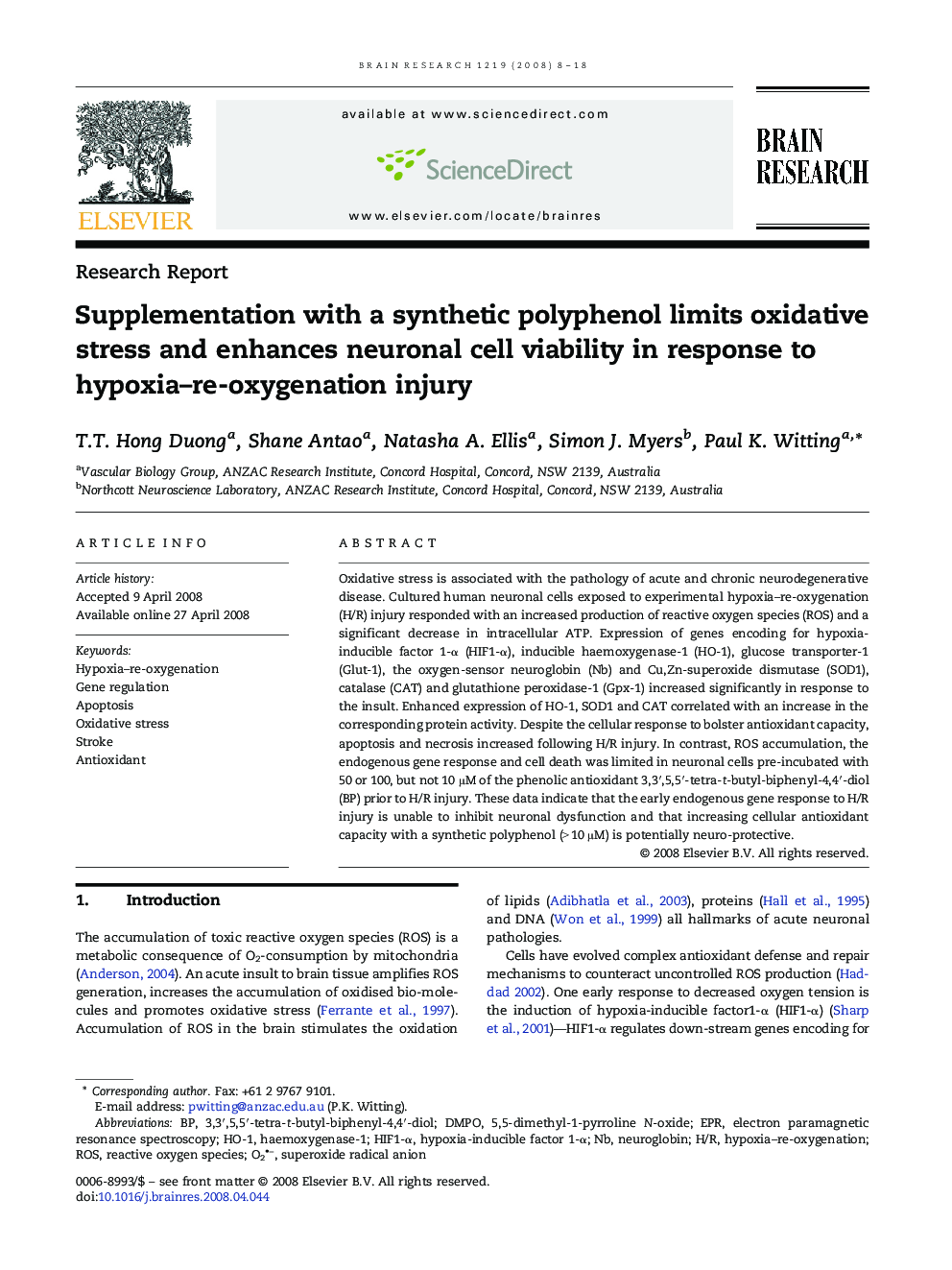| Article ID | Journal | Published Year | Pages | File Type |
|---|---|---|---|---|
| 4329554 | Brain Research | 2008 | 11 Pages |
Oxidative stress is associated with the pathology of acute and chronic neurodegenerative disease. Cultured human neuronal cells exposed to experimental hypoxia–re-oxygenation (H/R) injury responded with an increased production of reactive oxygen species (ROS) and a significant decrease in intracellular ATP. Expression of genes encoding for hypoxia-inducible factor 1-α (HIF1-α), inducible haemoxygenase-1 (HO-1), glucose transporter-1 (Glut-1), the oxygen-sensor neuroglobin (Nb) and Cu,Zn-superoxide dismutase (SOD1), catalase (CAT) and glutathione peroxidase-1 (Gpx-1) increased significantly in response to the insult. Enhanced expression of HO-1, SOD1 and CAT correlated with an increase in the corresponding protein activity. Despite the cellular response to bolster antioxidant capacity, apoptosis and necrosis increased following H/R injury. In contrast, ROS accumulation, the endogenous gene response and cell death was limited in neuronal cells pre-incubated with 50 or 100, but not 10 μM of the phenolic antioxidant 3,3′,5,5′-tetra-t-butyl-biphenyl-4,4′-diol (BP) prior to H/R injury. These data indicate that the early endogenous gene response to H/R injury is unable to inhibit neuronal dysfunction and that increasing cellular antioxidant capacity with a synthetic polyphenol (> 10 μM) is potentially neuro-protective.
